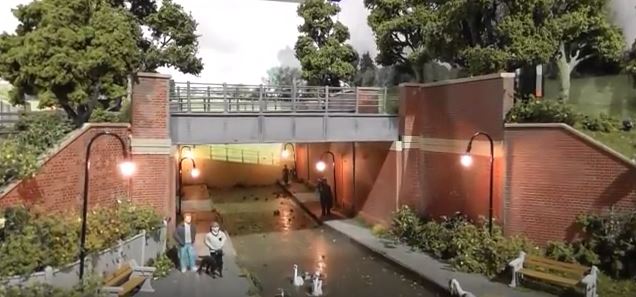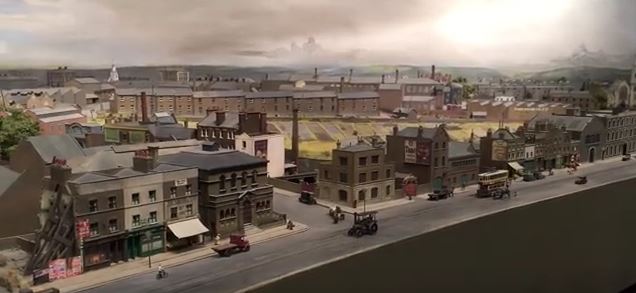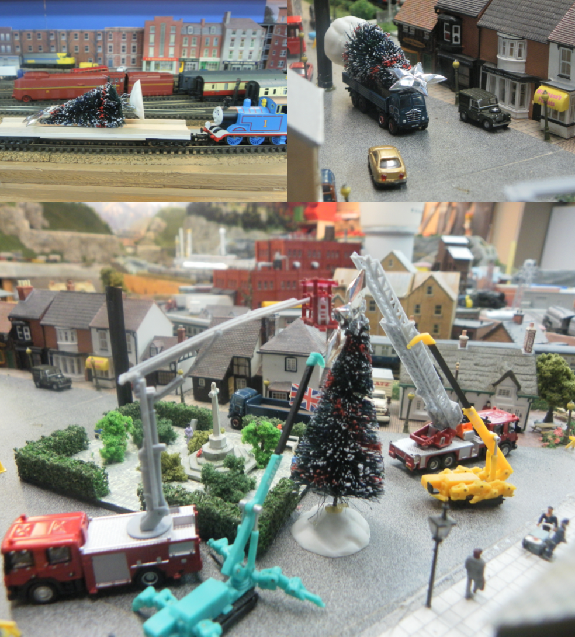Everything on model trains, model railroads, model railways, locomotives, model train layouts, scenery, wiring, DCC and more. Enjoy the world's best hobby... model railroading!
Removing Excess Metal on Rail Joiners
Aaron sent in this tip to share:
“I have just recently gotten into railroading and I love it so much. I have run into multiple issues so far but see them as challenges and enjoy finding fixes for my issues. One thing I would like to share that I haven’t seen on any site yet that you will find your rail joining so much easier if you trim the little excess metal from the joiners after you cut them from the strip. This will guarantee that they don’t use up too much area in the joints and cause a gap. Thanks for letting me share and happy railroading.”
Amazing Perspective in Wayne’s Photo
Wayne sent in this impressive photo he shot at the Warley National Model Railway Exhibition in the UK.
How To Stop Tunnel Derailments
Michael S asks readers:
“I thought I was doing the right thing by using flex track in my tunnel, but I am experiencing derailments. I do have a rail join in the tunnel curve and I suspect that could be the issue. Your help please.”
Problem Using LED Strip Lights in Passenger Cars
Cyril asks readers:
“This old dog put some modern LED strips in 2 passenger cars. I thought I was really clever, but they flicker so don’t look so good. My track is clean and can’t figure the cause. Any ideas? Thanks.”
Merry Christmas… I Hope Santa’s Not Too Late To Your House
Thank you to all those readers who contributed captions for the “Santa at the Station” photo. There were some very amusing captions so it was a difficult to choose a couple to include in my Christmas video. Captions from Bob and Mike were finally chosen after some discussions with “she who must be obeyed.” Another favorite was Jay’s “I can’t believe they left without me!” caption. I hope you enjoy my video below.
And, a special thanks to all those readers who contributed articles, photos, and answers to questions. You’ve made a valuable contribution to the hobby!
Also, very importantly, THANK YOU to everyone who purchased products advertised on this blog. Without your on-going custom, this website would not exist.
A very Merry Christmas to all… enjoy your trains… and have a safe and healthy new year!
Kindest Regards.
Robert
Santa at Station photo by Anneli Salo.
Dismantling and Moving My Layout
Barnaby asks readers:
“I thought I would live in this house til I die, but we’ve decided to move interstate closer to the son and daughter. Problem is moving my layout (HO) which was not designed to be moved… BIG MISTAKE! I can’t bear the thought of cutting it up, transporting it, and then trying to put it back together somehow. I made the scenery from chicken mesh and plaster of paris. I really don’t know where to start and hate the thought of cutting or damaging the track, trees and scenery. It is 4 foot by 3 foot one way and from the corner stretches 6 foot by 3 foot the other way. Can anyone else who has been through this type of drama give any suggestions on how or where to start? Also how to protect it from getting damaged by the removalists. Thanking you in anticipation.”
Locating Scale Model Vehicles
Rickie asks readers:
“I need to know where I can buy all the cars and trucks I want to put on my layout. I also am planning to have a number of rail cars that will transport cars from a factory. I don’t need die-cast as I’m sure they will cost a bundle, but I want 1:87 scale autos and trucks to closely match the HO scale. Any suggestions would be helpful.”
Poll Results – Progress of Your Layout
About 400 readers responded to our last poll which asked –
“On a scale of zero to five, how finished is your model railroad layout?”
Results were as follows:
- 0. Unfortunately I don’t have a layout yet 21%
- 1. 21%
- 2. 23%
- 3. 21%
- 4. 10%
- 5. ALL DONE! I’m Finished! 3%
How To Prevent Rust on an Old 1920’s Train
Steven hasn’t supplied a photo, but sent in this question on how to prevent rust:
“I recently acquired an early 1920’s Ives standard gauge engine with 2 passenger coaches which given their age are still in good shape. There are some scratch’s and chips in the paint but there’s no rust on the bodies. This train was being set out in the trash by an older lady who said it was her late husband’s boyhood train set.
Depending on who you ask, doing a paint restoration would take away in the value of these as antiques, and repainting them at this time isn’t on my to do list. However, I don’t want them to start to rust.
I plan on storing them in double ziplock bags with a light coating of oil until I run them again, and yes the engine still runs which surprised me, and will be running under the tree next week.
I’m open to suggestions on what would be best to keep the train bodies looking original and not starting to rust, and also suggestions on keeping the track from rusting while stored. Thanks in Advance for your advice.”
Steve you can post a photo of the train in the comments section under this posting if you would like to share one.
Christmas Tree Arrives By Train
Perry sent is these photos of the Christmas Tree arriving in the town of Gungemyre on his Greater Muttering and Cussing (GM&C) N gauge layout.
Now Available – 7 New Wild West Buildings
Just Released! This video clip might look a hundred years old, but 7 of the scale models seen here are brand new to the series. Feedback on the quality of the 6 existing plans has been very encouraging, so we’ve increased the town size to 13 buildings by adding: the Palace Hotel, Dry Goods & Clothing Store, Barbers Shop, Telegraph Office & Stage Depot, School House, Church, and Land Office. The existing series of 6 western buildings includes: the Sheriffs Office, Bank, Blue Mountain Saloon, Gun Smiths, Black Smiths, and General Store.





















